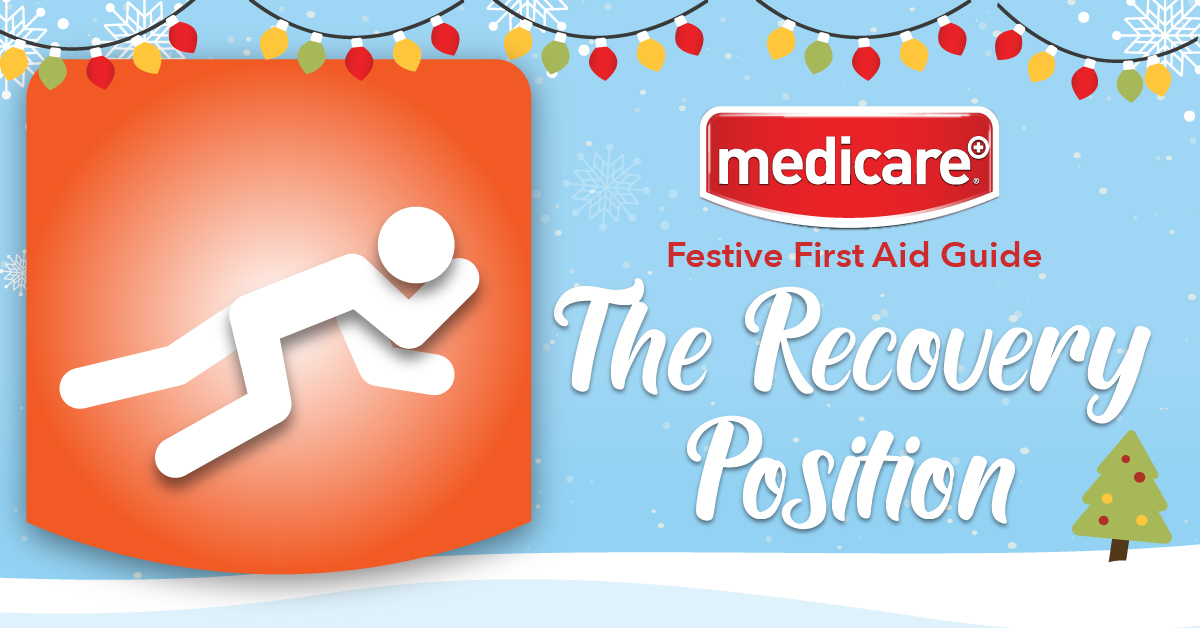Headlines
- Keeping Customers Covered: How Pharmacies can address the Summer Burn Surge - A clinical and practical guide for pharmacy teams
- Fleming Medical Achieves ISO 13485 Certification – Reinforcing Our Commitment to Patient Safety and Quality
- Gentle Daily Ear Care with Medicare Ear Spray
- Breathe Easy with Medicare Nasal Spray
- Fleming Medical Renews Support for Irish Heart Foundation’s “Before Damage is Done” Campaign with over €25K Donation
The 12 Injuries of Christmas - The Recovery Position
19 December 2019

Although not an injury The Recovery Position is something that everyone should be aware of. This procedure should be used to treat an unresponsive victim who is still breathing.
This position will help to manage the casualty’s airway by preventing their tongue from falling to the back of their throat. It also protects the airway from vomit which eliminates the risk of choking and causing further harm to the patient.
Airways consist of your nose, mouth, throat and lungs. It is vital that these are kept open to enable the passage of air to your lungs, so that oxygen gets transferred into your blood.
How to perform the Recovery Position
- Kneel down next to the casualty, roughly level with their chest.
- Place the arm that is nearest to you at a right angle with their hand upwards, towards their head.
- Tuck their other hand under the side of their head.
- Bend their knee farthest from you to a right angle.
- Carefully roll the victim onto their side by pulling their bent knee.
- The victim’s top arm should be supporting their head and their bottom arm will stop them from rolling too far.
- To open their airway, tilt their head back and lift their chin.
If you suspect that the victim has suffered a spinal injury, they should NOT be moved, unless they are in imminent danger.
Moving a casualty with a spinal injury should always remain a last resort. However, if necessary, the recovery position can be adjusted to avoid further damage to the spine.
This position is known as the ‘log roll,’ which is where the casualty’s limbs are straightened and they are moved in one slow, steady movement. The head, chest, hips and legs should be supported at all times, to keep the spine straight.

 Fleming Medical UK
Fleming Medical UK
